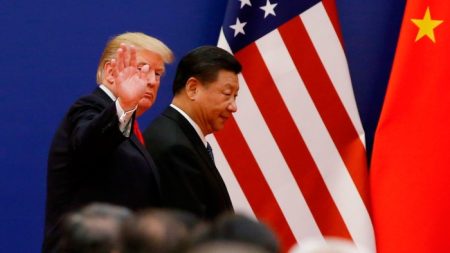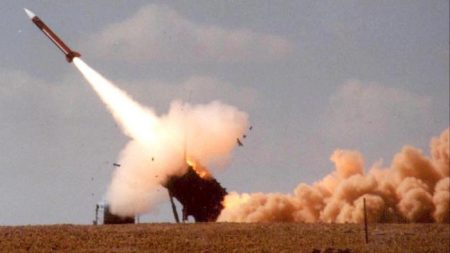Unlock the Editor’s Digest for free
Roula Khalaf, Editor of the FT, selects her favourite stories in this weekly newsletter.
Is Intel in the middle of one of the greatest turnarounds in business history? Or has Washington just committed to pouring tens of billions of dollars into a flailing has-been in a vain attempt to claw back a lead in global chip manufacturing?
The enormity of the bet that the US is making was laid bare this week, as Intel revealed just how big a hole the manufacturing side of its business is in. Had it not been for a change to its depreciation policies, the company would have reported a staggering loss of $11.2bn from manufacturing last year on sales of $18.9bn. Even after extending the life of some of its manufacturing equipment from five to eight years, it was still left with nearly $7bn of red ink.
This isn’t even the worst of it. The company predicts its manufacturing losses will reach their nadir this year, before a slow recovery. Its already-battered shares fell another 8 per cent.
This was never going to be a quick or easy turnaround. As it makes up lost ground and tries to get back on to the leading edge of global chipmaking, Intel is racing through five manufacturing “nodes”, or new process technologies, in only four years — roughly half the time it would normally take. That has saddled its manufacturing arm with massive start-up costs for each generation of technology without allowing time to reach volume production, when healthy profit margins normally appear.
The good news is that, nearly three years in, things are on track. This is no small feat: after a lost decade in which it squandered its lead in chipmaking, Intel has a real shot at getting back to parity with rivals TSMC and Samsung.
Politicians might also draw some relief from Intel’s sagging stock price. The last thing the White House needs is any perception that taxpayer money has brought a windfall for Intel’s shareholders, after the company spent years underinvesting in its business so it could buy back stock.
Yet the message from Intel this week was that things are going to take even longer than many hoped, and the thumbs down from the stock market is an ominous sign.
Splitting out the financial performance of its manufacturing arm, as Intel has done, was meant to be an important milestone. It was supposed to give Wall Street confidence that its manufacturing and chip design businesses are now being run independently, increasing the pressure on each to perform.
It was also meant to act as the catalyst for a stock price rebound. Chief financial officer David Zinsner suggested that, within a couple of years, the manufacturing business alone should be worth at least $200bn — more than the whole of Intel today. That the ploy hasn’t worked is down to one simple fact. As far as most investors are concerned, the two sides of Intel’s business are still joined at the hip, and their codependence will continue to dictate its fortunes.
Newer process nodes require ever-larger investment, which means ever-larger production volumes to make them economically viable. The US is backing Intel because it sees the company’s new foundry business — making chips on behalf of other companies, not just to Intel’s own designs — as an important national asset. But the long product cycles in the chip industry mean it will take years to bring in new customers, leaving Intel’s manufacturing business dependent on its own chip design arm as anchor customer.
On this score, things are not going well. After completely missing the mobile revolution, Intel is now struggling to come up with the right products for the booming AI market. This week, it said that failure to reach targets in selling AI accelerators — chips that speed up the training of large AI models — were a big reason it wouldn’t now achieve its 2026 profitability targets until the end of the decade.
This is ominous. For investors, the turnaround continues to stretch out further into the future, with little prospect of anything on the horizon to help the stock. For politicians in Washington, meanwhile, the costs of industry policy in the semiconductor industry should be starting to become clear. They were already facing the need to come up with more financial backing for Intel, just to keep pace with the subsidies the company’s rivals enjoy. If the company faces chronic low profitability and struggles to reach full capacity at its new plants, it will only add to the pressure.
Backing Intel to become the US chip manufacturing champion may have been the right move from a national and economic security perspective, but future administrations in Washington will learn the full costs of that decision.
Read the full article here












